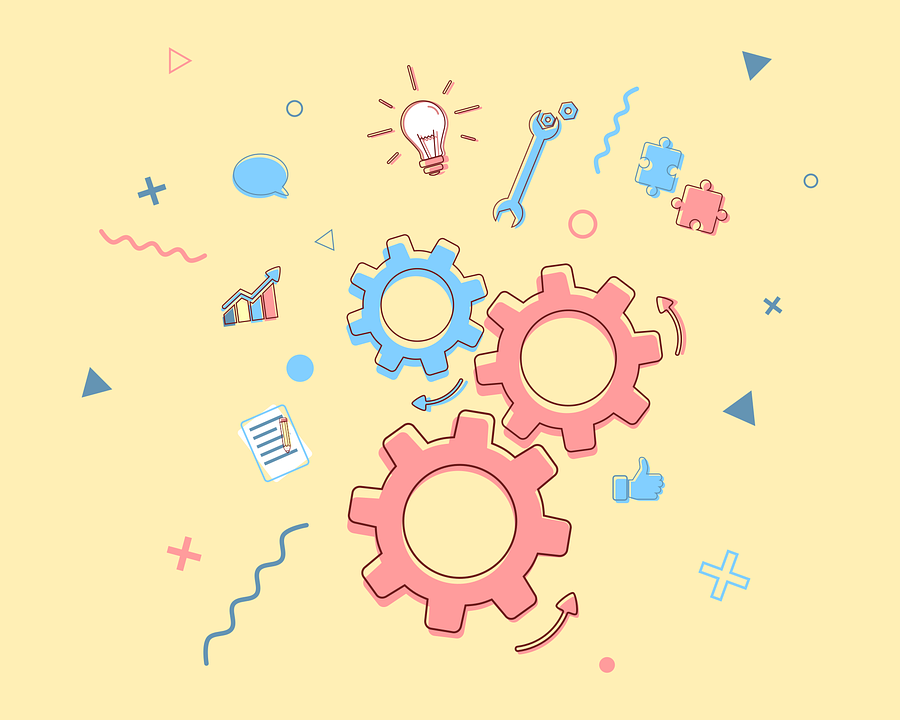Sprint design, is a process that consists of five stages:
- understanding,
- definition,
- decision,
- prototyping,
- research.
The aim and idea of the process is to work out the best final product. This is possible by designing, prototyping and testing new concepts. The task is usually assigned to a small team of programmers, who in a short time (usually 5 days) work on a project, which in effect is to meet all customer requirements. According to its name, the sprint design is about the speed of effective action. The time expenditure is supposed to be as little as possible, in order to find out immediately if the project makes sense, what are its advantages and disadvantages.

Sprint Design – where did it come from?
The authors of the project sprint methodology are specialists from Google. The idea behind the project was the need to develop the user experience model, i.e. the whole experience experienced by users using the software. The creators also wanted to develop a set of positive practices related to the design within the organization. While working on the process, many methods were taken into account, starting from classic UX practice, through strategic management to psychology. This kind of mixture was supposed to improve cooperation in teams, allowing to achieve satisfactory results at the initial stages in a short time.
Stages of Sprint Design
1. Understanding – Evaluation of a business idea
The first stage of sprint design is to assess the chances of success. It is here that the answer to the question of what is to be created, for what purpose and who is to be the recipient is sought. Specialists from a software company evaluate the business purpose of the project, in a way confirming the rightness of the concept assumed by the client.
2. Definition – Identification of possible solutions
After the determination of the user’s personnel and preliminary analysis of environmental factors, there comes a time for what the creative departments like the most, i.e. brainstorming. Here it comes to identifying all possible solutions. Also at this stage, experts look at the competitors’ activities and analyze market conditions.
3. Decision – Choosing the best solution
Choosing the best solutions is never an easy matter. It is usually preceded by stormy discussions and analysis of all available solutions. All this to make a unanimous decision that will give the green light to start working on a prototype.
4. Prototyping
The prototype prepared in the fourth stage of the sprint should be as close as possible to the final product. Only then is it possible to test the software among a predefined group of recipients. Preparation of the project is a double economic solution – thanks to it we save time and money, which would have been consumed by the finished product.
5. Examination – Comprehensive testing with customers
The final evaluation of the prototype is up to its potential customers. If they find that the result meets their requirements, the production of the final product can be started with confidence.
Why sprint design?
The answer to this question is economics. First of all, it is about valuable capital, which is undoubtedly time for every company. Sprint Design allows you to carry out creative activities with many variables and varying degrees of risk in a thoughtful way. It is a method that enhances creativity among the team involved in work and encourages maximum efficiency.

Working with a software house – the benefits
Companies that have benefited from the sprint design appreciate it for the opportunity to access expert knowledge and the latest technological innovations. However, the main advantage is to speed up the preparation of the final solution as much as possible, minimize costs and reduce the risks associated with the implementation of the product.
Sprint Design is an excellent tool to shorten the decision-making processes. You no longer need to create the whole solution, but only its most important assumptions and new, brilliant ideas.
The lack of knowledge or even lack of expertise, as well as poor understanding of the latest technological developments can significantly delay or hinder business development. A company that wants to be competitive in its industry needs help from a specialist who knows more about the digital landscape. This person is an external CTO.
External CTO – who is it and why do you need one?
Every company that wants to make themselves known on the market must keep up with the constant technological changes. In order to achieve this goal, you need a helping hand – a guide that will simultaneously take care of innovations in the company and, on the other hand, support them in establishing good relations with customers.
This person is the CTO, or Chief Technology Officer. His duties include the technological development of the company. The CTO is a specialist who should have advanced knowledge not only of technology but also of business, sales and marketing. Such person has the ability to perceive business through technology and vice versa – technology through business. Their knowledge of the latest and most effective solutions leads directly to the increase of company profits. Superman? Maybe not entirely, but surely someone who will professionally take care of the things that will take some pressure off of the company’s team.
Can an entrepreneur become his own CTO? Well, not exactly. In order to successfully develop the business and the technologies used, a startup needs a leader and an authority from outside, who will be able to provide specialist knowledge at any time. Without it, evaluating its own business potential is much more difficult, and understanding new technologies and the direction of change is often completely impossible.
Support from the CTO is one of the services that Da Vinci Studio provides. You will learn more about it by visiting the website www.cto.davinci-studio.com
Other interesting article
- Getting starter with design sprints – here you will find a great article on sprint design. Although it is already several years old, nothing has changed since then. The article is in English:














